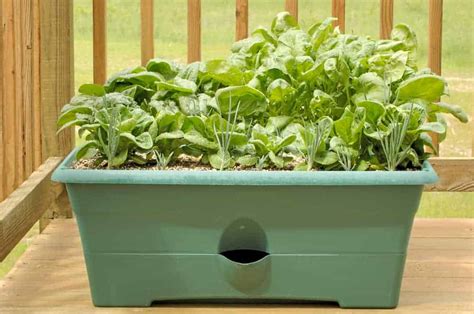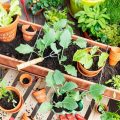Best Vegetables for Balcony Gardening: Top 5 Fall Crops for Urban Growers
As urban living becomes more popular, many people are turning to balcony gardening as a sustainable way to grow their own fall vegetables. With the right knowledge, even the smallest spaces can be used to cultivate seasonal crops, offering fresh produce right at your doorstep. This guide will cover the top 5 vegetables to grow on your balcony this fall, including practical gardening tips for each and how to ensure plant health in container gardening.
Key Concepts
- Container Gardening: Growing plants in pots or other containers, perfect for urban spaces like balconies.
- Fall Vegetables: Seasonal crops that thrive in cooler temperatures, ideal for harvesting before winter.
- Urban Gardening: The practice of growing food in city environments, using limited space creatively.
- Sustainable Eating: Cultivating food at home, reducing reliance on mass agriculture, and promoting healthier lifestyles.
Historical Context
The concept of urban gardening isn’t new. It dates back centuries, with ancient civilizations like the Babylonians and Romans growing crops in confined spaces. In the 20th century, container gardening became popular due to urbanization and space constraints. Today, balcony gardening is a key part of the sustainable eating movement, allowing city dwellers to reconnect with food production.
Current State Analysis
Urban gardening is on the rise, especially in densely populated cities. As more people become aware of environmental concerns and the benefits of growing their own food, the demand for practical and easy-to-maintain gardening solutions is growing. Container gardening allows individuals with minimal space to partake in this trend, and the fall season provides an ideal opportunity to start planting crops like kale, carrots, and radishes.
Top 5 Vegetables to Grow on Your Balcony This Fall
1. Kale
Kale is one of the hardiest fall vegetables, thriving in cooler temperatures and even tolerating light frosts. It’s also packed with nutrients, making it a popular choice for health-conscious gardeners. Ensure that your container is deep enough to allow the roots to grow, and use well-draining soil.
- Container size: Minimum 12 inches deep
- Sunlight: 6 hours of direct sunlight
- Harvest time: 55-75 days
2. Carrots
Carrots are ideal for container gardening in the fall, as they prefer cooler weather. Look for short, stubby varieties that are better suited for pots. Ensure your container is deep enough to accommodate their roots, and be mindful of consistent watering.
- Container size: Minimum 12 inches deep
- Sunlight: 6 hours of sunlight
- Harvest time: 70-80 days
3. Radishes
Radishes are fast-growing and can be harvested in as little as a month, making them an excellent choice for impatient gardeners. They’re also well-suited to shallow containers, making them easy to grow even in tight spaces.
- Container size: Minimum 6 inches deep
- Sunlight: 4-6 hours of sunlight
- Harvest time: 25-30 days
4. Spinach
Spinach is a cool-weather crop that flourishes in the fall. It’s perfect for container gardening as it requires little space and can even tolerate partial shade. Plant it in rich, well-draining soil, and water it regularly.
- Container size: Minimum 6 inches deep
- Sunlight: 4-5 hours of sunlight or partial shade
- Harvest time: 35-50 days
5. Lettuce
Lettuce is one of the easiest fall vegetables to grow. It thrives in cooler temperatures and can be harvested multiple times throughout the season by cutting the outer leaves. Be sure to keep the soil moist to ensure tender, crisp leaves.
- Container size: Minimum 6 inches deep
- Sunlight: 4-6 hours of sunlight
- Harvest time: 30-40 days
Practical Applications
By utilizing balcony gardening techniques, urban dwellers can enjoy fresh, homegrown vegetables without needing a backyard. Whether you’re looking to supplement your meals with fresh produce or embrace a more sustainable eating lifestyle, growing your own vegetables offers health, environmental, and financial benefits. Fall is a particularly advantageous time to plant, as cooler temperatures often reduce the need for watering and help prevent pests.
Case Studies
| Case Study | Outcome |
|---|---|
| Case 1: City Grower in New York | Grew kale, spinach, and radishes on a small balcony using 10-gallon containers. Result: Harvested enough produce to supplement meals for a month. |
| Case 2: Apartment Gardener in Chicago | Successfully grew carrots and lettuce in shallow pots. Result: Sustainable vegetable supply through the fall with minimal effort. |
Stakeholder Analysis
The rise of urban gardening impacts various stakeholders:
- Individuals: Gain access to fresh produce, reduce their carbon footprint, and save money on groceries.
- Communities: Can form gardening collectives to share knowledge and resources.
- Businesses: Increase demand for gardening supplies like pots, soil, and seeds.
- Local Governments: Encouraged to support urban gardening initiatives to promote sustainability.
Implementation Guidelines
- Choose the Right Containers: Deep pots are crucial for root vegetables like carrots, while leafy greens can grow in shallow containers.
- Use Quality Soil: Well-draining, nutrient-rich soil is essential for healthy plants.
- Monitor Sunlight: Ensure your balcony gets adequate sunlight; 4-6 hours is optimal for most vegetables.
- Water Consistently: Keep the soil moist but avoid overwatering, as this can lead to root rot.
- Fertilize Appropriately: Use organic fertilizers to enrich the soil during the growing season.
Ethical Considerations
While balcony gardening promotes sustainable eating and reduces reliance on industrial agriculture, there are ethical considerations around water usage and the sourcing of seeds. Urban gardeners should aim to use water-efficient methods and opt for organic, non-GMO seeds whenever possible to minimize their environmental impact.
Limitations and Future Research
While container gardening is a fantastic solution for urban environments, it does have limitations. Space constraints mean gardeners are limited in how much they can grow. Furthermore, soil in containers tends to dry out faster, requiring more frequent watering. Future research could focus on optimizing plant health in small spaces and developing more drought-resistant varieties for urban environments.
Expert Commentary
Experts in urban gardening suggest that balcony gardening is not only practical but also a meaningful way to reconnect with nature in a city setting. With the right gardening tips and knowledge, even a small space can become a productive, rewarding green oasis. They emphasize the importance of sustainable eating practices, encouraging city dwellers to embrace growing their own food as a way to contribute to environmental conservation.


